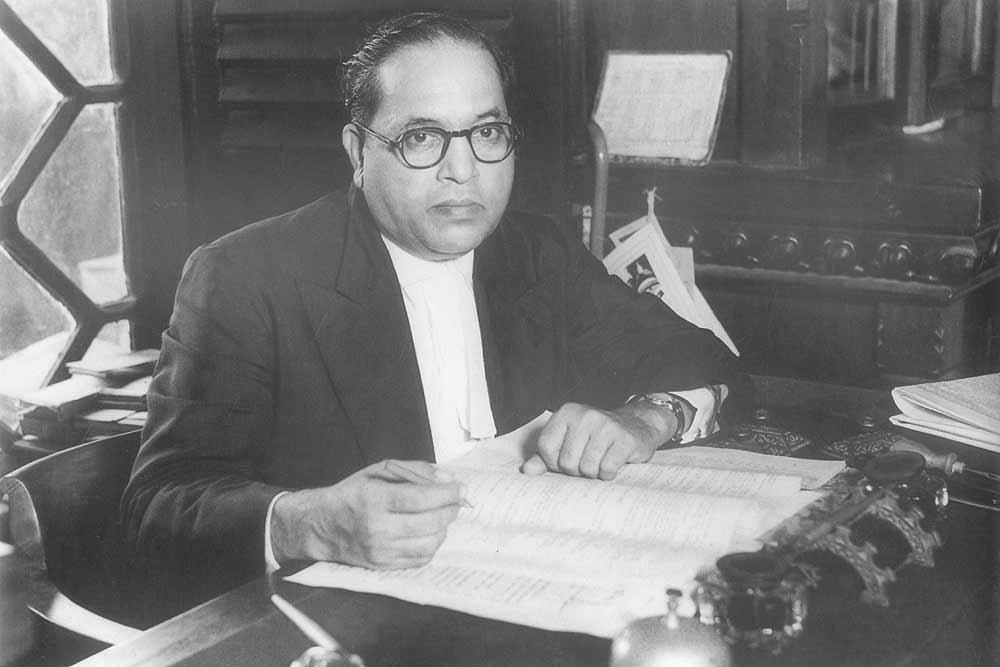
The dead history of Dalit publications in Tamil Nadu

The chief architect of the Indian constitution BR Ambedkar may not have been evaluated in totality. Many don’t know him as an editor and a journalist. January 31 is one such date where the Dalit icon is celebrated in a different light. The date marks 100 years of ‘Mooknayak’, a magazine for Dalits, which Ambedkar launched as a 29-year-old.
Later, he went on to launch three more publications in Marathi – Bahishkrit Bharat, Janata and Prabuddha Bharat.
While, India celebrates the centenary, Tamil Nadu – which has a history of Dalit struggles – should have been celebrating the 150th year of ‘Suryodayam’ the first Dalit magazine published in Tamil in 1869. Edited by Pandit Thiruvenkataswamy, it was the first magazine on Dalit issues ever published in India.
Also read | Constitution Day, a mix of cynicism and hope
Many Dalit icons such like Iyothee Thass Pandithar and Rettamalai Srinivasan who were BR Ambedkar’s contemporaries from Tamil Nadu contributed to the Dalits’ cause during the freedom struggle. They started magazines like ‘Oru Paisa Tamilan’ (1907) and ‘Parayan’ (1893). During the end of the 19th century and early 20th century, the number of Dalits publications stood at 150, however, post-Independence the numbers plummeted. Now Tamil Nadu doesn’t have even a single Dalit magazine published in the state.
What went wrong?
“Post-Independence many of the Dalit movements turned into political parties and their publications too became party literature. The need for starting a separate magazine never arose. When Dalit politics turned party politics, Dalit magazines began to decline,” says Stalin Rajangam, assistant professor, Department of Tamil, American College, Madurai. Rajangam has also documented the contributions made by ‘Parayan’, which was in circulation seven years between 1893 and 1900.
Also read | What’s worse — to be a Muslim in India or a Dalit wanting azadi from caste?
Besides, politics and community issues, these magazines also discussed Dalit art, literature and culture. Iyothee Thass Pandithar in his magazine ‘Oru Paisa Tamilan’ (renamed later as ‘Tamilan’) discussed extensively about Buddhism
“In the 90s, coinciding with Ambedkar’s birth centenary many Dalit magazines including ‘Puthiya Kodangi’, ‘Dalit Murasu’ were launched. They too gave importance to arts, literature and culture, besides politics. When these value additions came down, the readership too fell,” says Rajangam.
Echoing Rajangam’s sentiments, J. Balasubramiam, assistant professor, Department of journalism and science communication, Madurai Kamaraj University says Dravidian movement’s post-Independence has also played a crucial role in assimilating Dalit politics in the state. “Tamil Nadu tops the Dalit intellectual tradition. In 19th century, Dalit magazines could be found only here. Even Kerala with high literacy levels couldn’t match the number of Dalit publications coming out of Tamil Nadu,” says Balasubramiam.
Massive circulation
D Ravikumar, writer and Villupuram MP says the periodical ‘Parayan’ had circulation more than dailies coming out of the state in 1890s.
“During those times, Dalit leaders like Srinivasan had their own printing facilities. They also circulated these publications overseas. However, after he moved to London, to fight for Dalit rights, no one was here to take up the responsibility of running the magazine,” he says.
Also read | How Modi-Shah’s CAA is painfully oblivious to the plight of Dalit Muslims
Ravikumar himself edited magazines like ‘Dalit’, which focused on Dalit literature and ‘Bodhi’, which centred on Dalit history. Both the magazine published 10 issues between 1997 and 2007. “There are two reasons why the Dalit magazines became defunct after few years. One, the number of contributors were low and they were predominantly non-Dalits. But even then it was hard to find good writers. Secondly, readership of these magazines constituted general audience who were interested in social issues rather than Dalit politics. So the very purpose of running the magazine got defeated. And if you identify your magazine Dalit centered, it is hard to sustain the identity,” says the Member of Parliament.
Lack of support
“Without any fellowship, the research cannot be taken up. The running or retrieving a Dalit magazine should be done professionally and not as a part of the movement,” Balasubramaniam said.
Balasubramaniam feels that there is a lack of rigour in the fight for Dalit rights. “Iyothee Thass and Srinivasan ran their magazine without external support. Political consciousness was high then, but now, Dalit movements have started losing its sheen. For a Dalit to survive, it has to depend on external support like library orders,” said Ravikumar.
Turning the argument on its head, Punitha Pandian, editor of ‘Dalit Murasu’ magazine says Dalit magazine were never well received from the beginning. “If ‘Mooknayak’ has received well, why did Ambedkar start other magazines such as ‘Bhahishkrit Bharat’ and ‘Equality Janta’?” asks Pandian.
Also read | Denied houses on rent, Dalit sanitary workers build temporary shelters
“The population of Dalits in Tamil Nadu would be around 1.5 crores. The circulation of ‘Dalit Murasu’ in its final days in 2016 was about 4,800 copies. We usually print 20,000 copies. Compare the difference, how a magazine can survive? That too when the magazine spoke for inclusivity,” he said. The magazine stopped publishing in 2017 after a 20 year run.
“All these centenary celebrations are becoming news. But besides that, there is no constructive development. Except the single masthead page of ‘Parayan’, we don’t have any other copies of that magazine today and this speaks the volume of neglect,” says Pandian.


